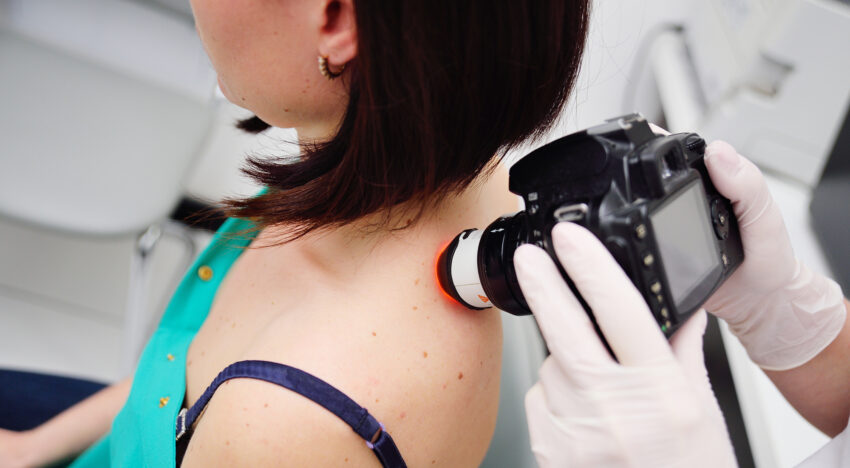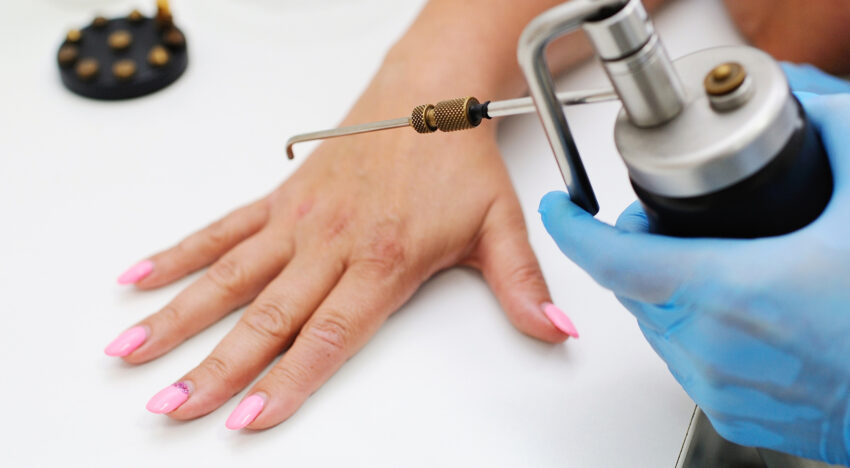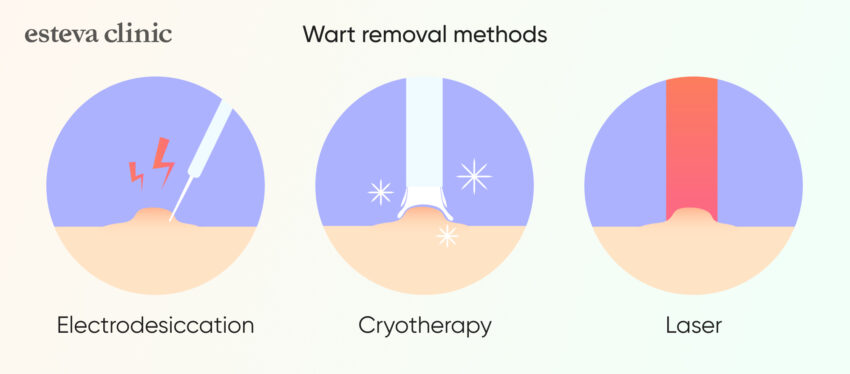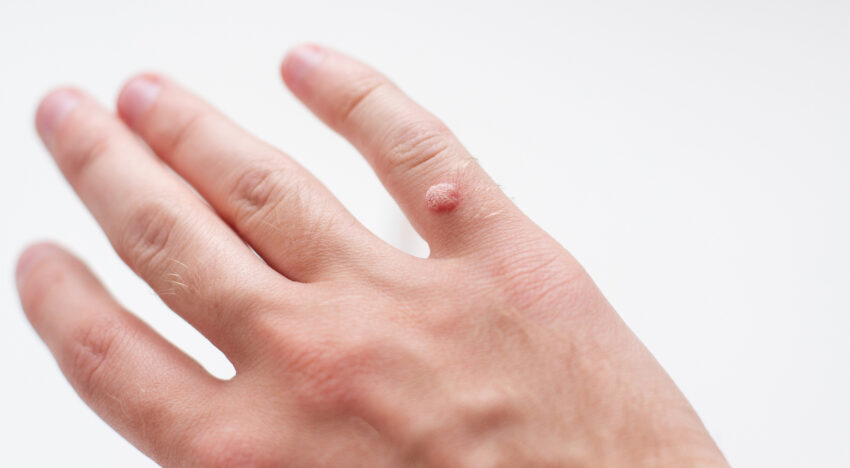Causes of warts on the body
The cause of warts is the human papillomavirus (HPV) and most often such formations do not pose a serious danger to human health. Viral warts are a very common benign skin growth. In this article we will look at the causes of warts, how to determine whether they are dangerous and when you should see a doctor.
Symptoms of warts
In general, all warts have a hard, keratinized surface and small red or black dots (capillaries). However, the symptoms of warts may differ depending on what type of tumor appears on the skin.
The most common warts are:
◼ in school-age children, but education can appear in adulthood;
◼ in people with dermatitis caused by a defect in the skin barrier;
◼ in people with drug immunosuppression (for example, long-term use of azathioprine or cyclosporine, or the presence of human immunodeficiency virus (HIV).
Below we will look at the most common types of warts that appear on the skin of both children and adults.
Types of warts
There are several most common types of warts, each of which has its own distinctive features.
◼ Common wart. A papule (nodule) that looks like cauliflower, ranging in size from 1 mm to 1 cm or more. Common warts can be either single formations or multiple in nature. It has a rough, papillomatous and hyperkeratotic surface. It is most often found on the backs of the fingers and toes, around the nail beds, and on the knees.

◼ Flat wart. Most often these are multiple flat papules-nodules with a flat top. They are flesh-colored and usually appear on the legs, arms and face. The virus often spreads when shaving, resulting in multiple formations.

◼ Filiform (finger-shaped) wart. A cluster of thin branches that emerge from a narrow base. Most often localized on the face.

◼ Plantar wart. Such warts are located on the feet, surrounded by yellow hyperkeratotic calluses and tend to grow inward. The formations cause pain when pressed directly or sideways.

◼ Butcher’s wart. Outwardly it resembles an ordinary wart and has a multiple character. It got its name because it most often appears on the hands of butchers and other people whose activities involve constant exposure to a cold and damp environment.

◼ Epidermodysplasia verruciformis. A rare autosomal recessive disease that manifests itself on the skin in the form of warty rashes that have a tendency to malignant transformation. However, despite the fact that the disease often affects large areas of the skin, patients experience no pain.
How to distinguish a wart from a mole
You can usually distinguish a wart from a mole on your own and at home. Benign skin formations, although they have many common features, are still significantly different from each other.
Warts are usually hard because they are covered with a layer of horny matter. Also, when pressing on such a formation, a person most often experiences pain of varying intensity. Moles, on the contrary, have a smooth and soft surface and do not cause any pain.
The color of the wart in most cases is close to the color of the skin with a slight addition of yellow or pink. Moles often have a darker color – from flesh-colored to almost black.
Are warts dangerous or not
In most cases, warts are not dangerous and cause only aesthetic discomfort. However, it is worth noting that in some cases, neoplasms on the skin may not be entirely benign and may pose a certain danger.

How can warts cause harm
Having warts on the body may pose the following risks:
◼ first of all, it is important to remember that warts are contagious. Since warts appear due to the human papillomavirus, it is transmitted quite simply – through areas of the skin that have cuts, cracks and inflammation;
◼ warts located near the nail plate can cause nail destruction;
◼ plantar warts make walking and playing sports difficult, causing unpleasant pain not only in the foot, but also in the knee or hip;
◼ in epidermodysplasia verruciformis, specific types of HPV can cause cutaneous squamous cell carcinomas.
When to see a doctor
Based on the dangers described above, many people consider scheduling a consultation with a dermatologist to get rid of warts. It is worth noting that in many cases, formations go away on their own, especially in childhood or adolescence.
However, there are also situations when you should not postpone a visit to the doctor. You need to make an appointment at the clinic if:
◼ a person has immunosuppression – suppression of the immune system for any reason;
◼ complications in the form of pain, infection and trauma to the formation;
◼ there are cosmetic indications for wart removal (for example, aesthetic discomfort or risk of injury).
We talked in detail about the situations in which it is necessary to make an appointment with a dermatologist or cosmetologist in our video.
Treatment of warts
Diagnosis of warts and their treatment is carried out in cosmetology clinics and hospitals by a dermatologist. Before removing formations, it is necessary to undergo tests to determine what type of virus a person is infected with, what the viral load is and the integration of the virus into the genome.
How to prevent warts
At the moment, it is not possible to completely cure viral papillomavirus (HPV) and patients are offered a set of actions that reduce the risk of new formations. First of all, it stimulates the immune system and prevents stress on it. People diagnosed with HPV need to avoid overload, severe stress, vitamin deficiency and hypothermia by all means. Also in some cases, the use of retinoids (beta-carotene and vitamin A), vitamin C and various microelements such as folate shows effectiveness. The doctor determines the treatment and personal care regimen for each individual patient after an individual meeting and analysis of all available data.

There is also a vaccine that protects the human body against four types of HPV. Vaccination of girls and women is carried out at the age of 9-45 years, and boys and men from 9 to 26 years.
How to remove warts
Having strengthened the body from the inside, you can begin to remove warts, if there is such a need. How to remove warts in a modern cosmetology clinic:

◼ Radio wave removal method. The method is used to treat large and resistant warts. For removal, local anesthesia is used, under which the growth is cut off and the base is burned out. The resulting wound takes 2 weeks or more to heal (depending on the size and location) and a scar most often remains behind the healed area.
◼ Cryotherapy. Benign skin lesions can also be removed by freezing with liquid nitrogen. The procedure is carried out at intervals of 2-3 weeks to achieve the result of exfoliation of the superficial skin balls. The removal method is not ideal, as it results in the formation of blisters that last from several days to several weeks.
◼ Laser removal. A method of removing warts that is used in some situations. To carry out the procedure, local anesthesia must be used, and marks on the skin take a long time to heal. For this reason, laser removal of warts is not considered optimal and is used less frequently than the methods described above.
◼ Local treatment. This method involves the use of various ointments, pastes and patches that contain salicylic acid, podophyllin or similar compounds that remove cells from the surface of the skin.
You can learn more about how various tumors are removed in our clinic in a short and informative video.
To receive a comprehensive individual consultation, you must make an appointment at the Esteva Clinic aesthetic medicine center. Our specialists will answer all your questions and help you determine a treatment plan for skin tumors.
Видалення папілом і бородавок
| Назва процедури | Ціна, грн |
|---|---|
| Консультація з дерматоскопією в день видалення новоутворень | 300 |
| Консультація з дерматоскопією без процедури видалення новоутворень | 590 |
| Контроль після видалення з 30 по 45 день | Безкоштовно |
| Видалення папіломи / бородавки 1шт (до 0,5 см) | 450 |
| Видалення папіломи / бородавки 1шт (0,5 - 1 см) | 550 |
| Видалення папіломи / бородавки 1шт (1 - 2 см) | 650 |
| Пакет №1 (від 10 до 20 новоутворень) | 2390 |
| Пакет №2 (від 21 до 30 новоутворень) | 2900 |
| Пакет №3 (від 31 до 50 новоутворень) | 3500 |
| Гістологічне дослідження 1шт (обов’язкове для: травмованих новоутворень, родимок, невусів, поліпів) | 890 |
| Знеболювання (1 - 10 шт) | 300 |
| Знеболювання Пакет №1 (11 - 20 шт) | 490 |
| Знеболювання Пакет №2 (21 - 30 шт) | 690 |
| Знеболювання Пакет №3 (31 - 50 шт) | 990 |








